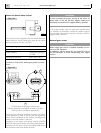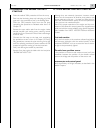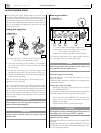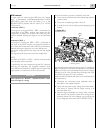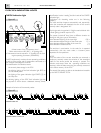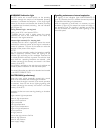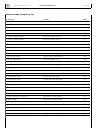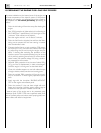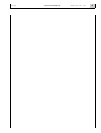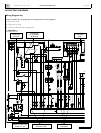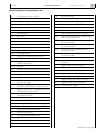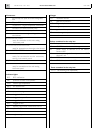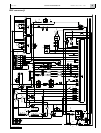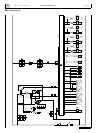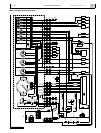
INSTALLATION DIRECTIVE MAY 2006
44
V08 ENT M75
-
M11
-
M12
19. PREPARING THE ENGINE FOR LONG IDLE PERIODS
To prevent oxidation to the internal parts of the engine and
to some components of the injection system, if idle periods
exceeding two months are expected, the engine needs to
be prepared with six-month periodicity, proceeding as
follows:
1. Drain the lubricating oil from the sump, after heating the
engine.
2. Pour 30/M protective oil (alternatively, oil conforming to
MIL 2160B Type 2 specifications) into the engine to the
“minimum” level marked on the dipstick.
Start the engine and let it run for about 5 minutes.
3. Drain the fuel from the injection line and from the filters,
taking care to prevent the fuel from coming in contact
with the alternator’s belt.
4. Connect the fuel line to a tank containing CFB protec
-
tive liquid (ISO 4113) and assist the inflow of the liquid
by pressurizing the line and turning the engine over for
about 2 minutes, after excluding the operation of the
injection system. The required operation may be carried
out by directly polarizing the terminal 50 of the electric
starter motor with positive voltage 24 V, using a conduc-
tor prepared for the occasion.
5. Nebulize 30/M protective oil at the rate of about 100 g
(10 g per litre of displacement) in both turbochargers,
while the engine is turning over as described above.
6. Close with suitable stoppers or seal with adhesive tape
all engine intake, exhaust, aeration and venting ports.
7. Drain the residual 30/M protective oil from the sump; it
may be re-used for 2 more engine preparation opera-
tions.
8. Apply tags with the inscription “ENGINE WITHOUT
OIL” on the engine and onboard panel.
9. Drain the coolant, if it has not been mixed with anti-
freeze and corrosion inhibiting agents, affixing tags to
indicate that the operation has been carried out.
If external parts of the engine are to be protected, spray
protective liquid OVER 19 AR onto unpainted metal parts,
such as flywheel, pulleys and others; avoid spraying belts, con-
nector cables and electrical equipment.



